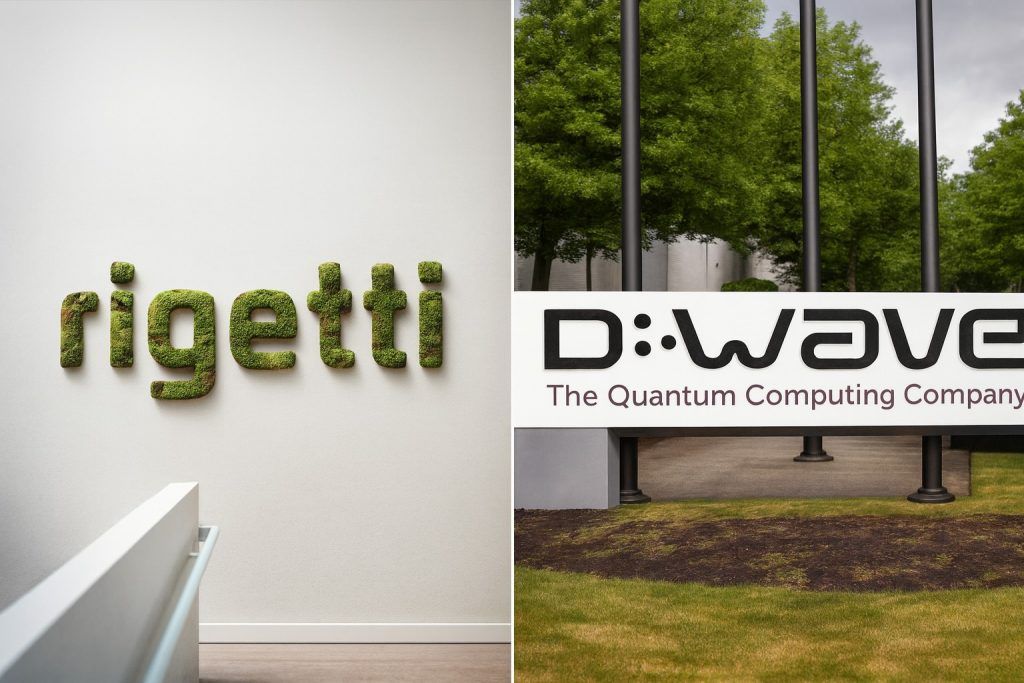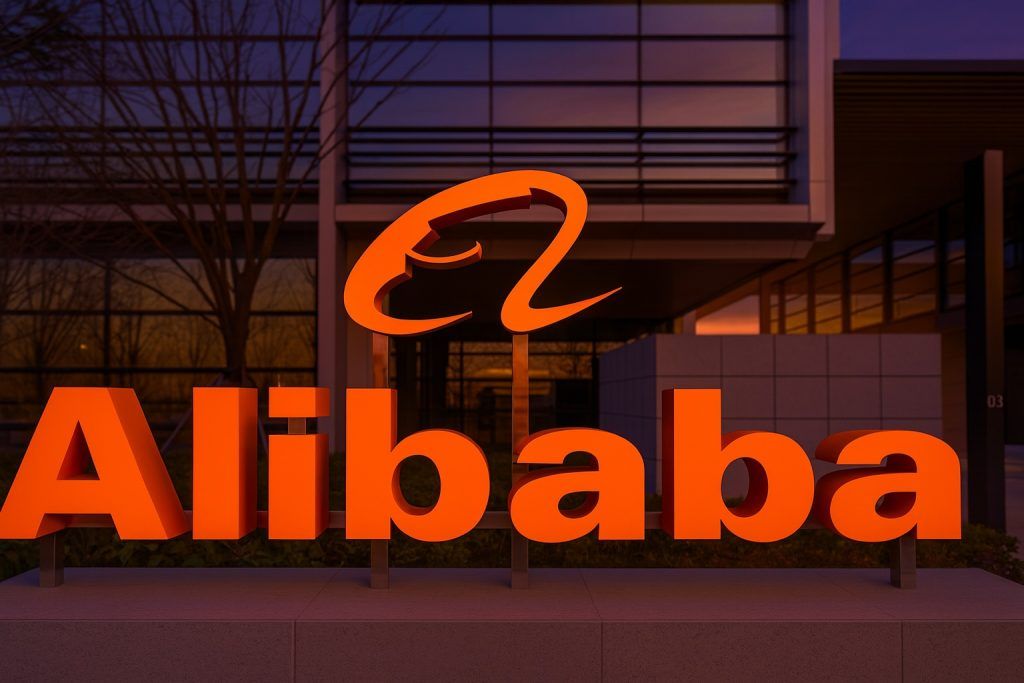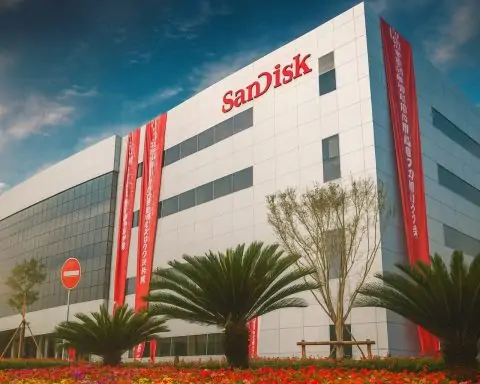- Nuclear’s Resurgence: Demand for carbon-free baseload power is surging worldwide, with countries restarting plants and planning new reactors [1] [2]. Uranium prices, now around $75–$82 per pound, are at multi-year highs on tight supply and strong demand [3] [4].
- Cameco (NYSE: CCJ): A uranium-mining giant controlling “the world’s largest high-grade uranium reserves”with mines and fuel services across Canada, the U.S., Australia and Kazakhstan [5] [6]. It has a $37+ billion market cap, low debt (~$280M net debt mid-2025) and generates stable cash flow under long-term contracts [7] [8]. Cameco also bought 49% of Westinghouse Electric in late 2023 to bolster its fuel-cycle footprint [9].
- Oklo (NYSE: OKLO): A Silicon Valley–backed startup (co-founded by Sam Altman) building advanced fast reactors (the “Aurora” SMR). Oklo went public in May 2024 via a SPAC, raising ~$306 million [10] [11]. It is pre-revenue: first power isn’t due until ~2027–2028. However, Oklo has aggressive partnerships (with data-center power vendors, GE ally Centrus, Blykalla in Sweden, etc.) and pipeline deals aiming to sell SMR power under long-term contracts [12] [13].
- Investor Momentum: Both stocks have soared in 2025. Cameco’s share price is up ~65% YTD (through early Oct 2025) as utilities lock in fuel and supply tightens [14]. Oklo has rocketed even higher (over +550% YTD) on hype around SMRs and AI data-center power [15]. Analysts like Wedbush’s Dan Ives see Oklo as “just the start” of a nuclear rally led by AI demand [16], while others caution that Oklo “needs finalized customer agreements” to justify its huge valuation [17].
- Risk vs. Reward: Cameco’s low-cost, diversified mines and fuel business make it a safer, more established play. It earns profits now and will steadily benefit if uranium prices stay strong [18] [19]. By contrast, Oklo is a high-upside, high-risk bet – it could capture new markets (data centers, AI computing, microgrids) with its reactors, but faces long lead times, licensing hurdles and massive capital needs [20] [21].
- Regulatory Tailwinds: U.S. policy is strongly pro-nuclear: a $50 billion DOE budget (FY2024) includes special billions for advanced reactors and fuel supply [22] [23]. New laws (like the 2024 ADVANCE Act) mandate faster NRC reviews and lower fees for SMRs [24]. Europe, Asia and Africa are likewise accelerating nuclear projects [25] [26]. Both Cameco and Oklo stand to gain from this global push.
Nuclear’s Second Act: Clean Power Gains Momentum
After decades of stagnation, nuclear power is enjoying a dramatic comeback. In 2024–2025, dozens of governments have either restarted plants or greenlit new ones to meet climate and energy-security goals. The U.S. Congress funneled record funding into nuclear R&D and fuel (doubling enrichment and building HALEU supply) as part of a clean-energy spending bill [27] [28]. Likewise, Congress passed bipartisan laws (the 2024 ADVANCE Act) to speed up licensing of new reactor designs [29]. Globally, countries from France and the UK to China, India, and even some historically anti-nuclear nations (Italy, Serbia, etc.) are planning reactor projects [30] [31]. Industry executives credit this shift to both decarbonization and energy security (e.g. responding to the Ukraine war) [32] [33].
Uranium markets reflect the revival. Spot prices recently climbed into the mid-$70s per pound, and industry analysts now forecast further gains. A Forbes analysis notes that “revived interest in nuclear power as a source of clean energy is providing the demand” while supply has tightened (with Cameco and Kazakhstan cutting production) [34]. Wall Street firms see uranium reaching $80–$100 soon [35]. In short, baseload nuclear looks poised for a strong multi-year run, and investors are hunting ways to play it.
Cameco: The Uranium Industry Giant
Cameco Corp (NYSE: CCJ) is a stalwart of the nuclear fuel industry. It controls “the world’s largest high-grade uranium reserves and low-cost operations,” with sprawling assets from Canada’s Athabasca Basin to mines in the U.S., Australia and Kazakhstan [36] [37]. Beyond mining, Cameco refines and converts uranium and even makes reactor fuel, serving both light-water and heavy-water reactor fleets [38]. This integrated business model means Cameco supplies roughly one-sixth of global reactor uranium.
Because of its scale, Cameco’s finances are rock-solid. As of mid-2025 it had only about $280 million in net debt (ratio 0.2× EBITDA) [39]. Management has deliberately kept production disciplined – famously idling mines post-Fukushima to avoid flooding the market at low prices [40]. Today that discipline puts Cameco in a strong position. CEO Tim Gitzel observes that in recent years nearly “20 countries… have done a complete U-turn on nuclear” and are expanding reactor fleets or planning SMRs [41]. Cameco’s vast reserves and long-term contracts give it a guaranteed sales book as demand surges. And its 49% acquisition of Westinghouse Electric in 2023 further extends its role into reactor services and fuel fabrication [42].
Crucially for investors, Cameco already generates cash. It sells uranium under multiyear contracts at profitable prices. If spot prices stay high, Cameco can ramp up output (it’s restarting the big McArthur River mine) and boost earnings. Analysts note that Cameco’s combination of size, diversification and low debt makes it a relatively “conservative” nuclear stock. As one Motley Fool analysis advises, risk-averse investors see Cameco as a steady play that “powers portfolios with a less speculative option” [43] [44].
Oklo: Betting on Advanced Reactors and AI Data Centers
Oklo Inc. (NYSE: OKLO) could not be more different. It’s a startup founded in 2013 to commercialize ultra-small, fast-spectrum nuclear reactors. Its flagship design is the Aurora SMR – a 75-MWe sodium-cooled fast reactor fueled with high-assay low-enriched uranium (HALEU). Oklo’s vision is to sell clean power directly to customers (like data centers, industrial sites or military bases) via long-term contracts – an “owner-operator” model [45].
Oklo only recently became a public company via a SPAC merger. In May 2024 Oklo began trading on the NYSE (ticker OKLO) after completing its business combination, with about $306 million in cash proceeds [46] [47]. Sam Altman (OpenAI’s CEO) serves as Oklo’s chairman and an early investor. At the listing, Oklo touted its “unique set of strategic agreements” – partnerships with oil producer Diamondback, enrichment firm Centrus, and technology companies – to advance its reactor and fuel projects [48]. CEO Jacob DeWitte said Oklo was “proud of what our team has accomplished to date” and eager to keep deploying advanced reactor tech for customers [49].
Oklo’s growth plan hinges on new technology and timing. It has broken ground on its first commercial site at Idaho National Lab (under a DOE reactor-pilot program) with operations expected in 2027–28 [50] [51]. Oklo has also inked several strategic alliances: for example, a July 2025 deal with Vertiv to co-develop power and cooling systems for AI data centers [52], and a 2025 partnership with Swedish developer Blykalla to share supply-chain and licensing know-how across the Atlantic [53] [54]. Oklo’s CEO notes these collaborations “strengthen the growing advanced reactor ecosystem in the face of unprecedented global demand for power” [55], aiming to shorten lead times and costs.
Still, Oklo has no current revenue. Its first power plant – a sophisticated fast reactor – must clear a thicket of regulatory steps. Oklo filed the first-ever combined NRC license application for an advanced reactor in 2020, but regulators required more data and reviews continued through 2024 [56]. In 2025 Oklo was awarded DOE fuel from the EBR-II test reactor and got approval on a safety design strategy, but final licensing is pending [57] [58]. Financially, analysts project Oklo will burn cash (revenue starts ~2027) and likely remain unprofitable for years [59]. In short, Oklo is a high-risk, high-reward play: it could revolutionize micro-nuclear power if successful, but faces execution and capital challenges.
Business Models and Risks: Scale vs. Speculation
The contrast in models is stark. Cameco is a capital-intensive commodity producer with decades of operations behind it. Its revenue stream is predictable (long contracts) and tied to commodity prices. The company’s strength lies in existing assets and contracts – investors essentially bet on rising uranium prices and steady reactor demand. By one account, “Cameco’s supply discipline and tier-one reserves” put it in a position to benefit from the tight uranium market [60]. The company is also looking ahead: it’s exploring SMR fuel sales and recently partnered with X-Energy (an SMR firm) to supply fuel for new reactors [61]. But its growth will be relatively gradual. Critics note that Cameco is still exposed to cyclical uranium prices and potential regulatory hurdles (e.g. export rules, or if nuclear growth disappoints).
Oklo, conversely, sells an idea. Its asset today is mostly R&D and the promise of future reactors. Oklo’s value comes from the “enormous appetite for clean energy” and AI-driven power demand [62]. On the upside, Oklo benefits from massive investor enthusiasm: its stock jumped 552% in 2025 alone [63]. Wall Street analysts like Dan Ives see Oklo as the AI-fueled vanguard of nuclear power, forecasting big gains [64]. The stock has already taken this enthusiasm into account, trading at a multi-billion-dollar market cap. But caution is warranted: as one analyst noted, Oklo is still “catalyst-driven” and needs to finalize customer contracts and actually build reactors to justify its valuation [65]. Industry experts warn that “nuclear… isn’t ready for prime time” and SMRs may require enormous capital before producing power [66] [67].
Both companies share some tailwinds: higher uranium prices and pro-nuclear policy should lift them. In fact, Cameco CEO Tim Gitzel argues the current moment is “a real positive story for nuclear” and that Cameco can play a central role in climate and energy security [68] [69]. For Oklo, U.S. policy is actively helping: in 2025 Oklo won DOE Reactor Pilot funding and high-level government backing (Interior Sec. Doug Burgum called the Aurora project “critical” for powering AI-era industry [70]).
Investment Takeaways for Portfolios
Which stock captures the nuclear revival better depends on investor goals and risk tolerance.
- For stability and yield, Cameco is compelling. It has a proven business, positive cash flow and dividends. Its shares provide direct uranium price exposure with lower volatility than startups. As one Motley Fool adviser notes, conservative investors often prefer Cameco’s steadiness over speculative bets [71]. Cameco also has an upgraded earnings outlook: analysts estimate ~130% EPS growth in 2025, reflecting the tighter market [72](Zacks).
- For high-growth potential, Oklo is the poster child. It’s riding the nuclear hype cycle: strategists forecast a huge addressable market in AI data centers, remote energy microgrids, and defense. In fact, Oklo executives are targeting those sectors explicitly and have already lined up letters of intent for thousands of megawatts of future capacity [73] [74]. In the short term, momentum has rewarded Oklo investors – Wedbush’s Ives raised Oklo’s price target to $150 (as of Oct. 2025) on optimism about its growth strategy [75]. But remember: Oklo is still years from profitability. Goldman’s analyst cautions that without concrete contracts, the stock is priced on hope [76].
- Policy and industry risk also differ. Cameco faces classical mining risks: uranium price swings, mine development delays (McArthur River had production hiccups, for example [77]), and regulatory approval for expansions. However, it also benefits from the broader fuel cycle (like Westinghouse ties) that can buffer some swings. Oklo, by contrast, hinges on unproven tech. A change in policy (e.g. shifts in government nuclear support) or NRC delays could sharply hurt its prospects. The company’s value is in its intellectual property and backlog of agreements, so geopolitical or regulatory setbacks could impact its stock more dramatically.
In summary, Cameco offers a conservative way to ride the nuclear boom – it’s already integrated into the traditional reactor market and cashing in on uranium’s jump. Oklo offers a leveraged way – if next-generation reactors truly take off, it could reap massive rewards, but it’s a speculative, long-term play. Many investors choose a mix: taking the bread-and-butter exposure of Cameco (and perhaps other diversified uranium stocks or funds) while allotting a smaller “moonshot” portion to Oklo or other SMR developers.
The expert consensus: No one answer fits all. Analysts like Dan Ives applaud Oklo’s early wins and AI-driven vision [78], while others like JPMorgan’s Rama Variankaval urge caution that “the reality… is [nuclear] not ready for prime time” [79]. Meanwhile, Cameco’s CEO confidently notes the global shift toward nuclear is “undeniable”, and Cameco’s supply moves are timed to capitalize on it [80] [81]. Ultimately, each investor must weigh asset quality (established reserves vs. experimental reactors), timelines (immediate revenue vs. multi-year gestation) and policy risk. Both Cameco and Oklo are positioned to benefit if nuclear’s renaissance is real – the question is whether you bet on the proven leader or the upstart innovator, and how much risk you’re willing to take.
Sources: Industry reports, company disclosures and market analysts [82] [83] [84] [85].
References
1. www.nei.org, 2. www.energy.gov, 3. www.ans.org, 4. www.ans.org, 5. www.cameco.com, 6. www.nasdaq.com, 7. www.nasdaq.com, 8. www.nasdaq.com, 9. www.cameco.com, 10. oklo.com, 11. oklo.com, 12. www.facilitiesdive.com, 13. oklo.com, 14. investorsobserver.com, 15. investorsobserver.com, 16. investorsobserver.com, 17. investorsobserver.com, 18. www.nasdaq.com, 19. www.world-nuclear-news.org, 20. www.facilitiesdive.com, 21. investorsobserver.com, 22. www.energy.gov, 23. www.energy.gov, 24. www.nrc.gov, 25. www.nei.org, 26. www.nei.org, 27. www.energy.gov, 28. www.energy.gov, 29. www.nrc.gov, 30. www.nei.org, 31. www.nei.org, 32. www.world-nuclear-news.org, 33. www.world-nuclear-news.org, 34. www.ans.org, 35. www.ans.org, 36. www.cameco.com, 37. www.nasdaq.com, 38. www.nasdaq.com, 39. www.nasdaq.com, 40. www.world-nuclear-news.org, 41. www.world-nuclear-news.org, 42. www.cameco.com, 43. www.nasdaq.com, 44. www.nasdaq.com, 45. oklo.com, 46. oklo.com, 47. oklo.com, 48. oklo.com, 49. oklo.com, 50. www.nasdaq.com, 51. www.facilitiesdive.com, 52. www.facilitiesdive.com, 53. oklo.com, 54. oklo.com, 55. oklo.com, 56. www.world-nuclear-news.org, 57. oklo.com, 58. oklo.com, 59. investorsobserver.com, 60. www.world-nuclear-news.org, 61. www.nasdaq.com, 62. oklo.com, 63. investorsobserver.com, 64. investorsobserver.com, 65. investorsobserver.com, 66. investorsobserver.com, 67. investorsobserver.com, 68. www.world-nuclear-news.org, 69. www.cameco.com, 70. www.world-nuclear-news.org, 71. www.nasdaq.com, 72. www.zacks.com, 73. www.nasdaq.com, 74. oklo.com, 75. investorsobserver.com, 76. investorsobserver.com, 77. www.ans.org, 78. investorsobserver.com, 79. investorsobserver.com, 80. www.cameco.com, 81. www.world-nuclear-news.org, 82. www.nasdaq.com, 83. www.ans.org, 84. oklo.com, 85. investorsobserver.com









